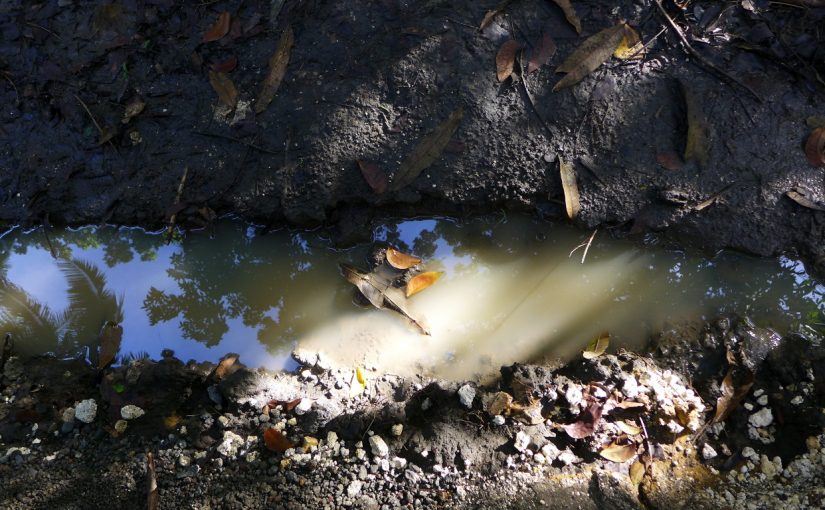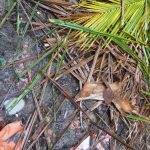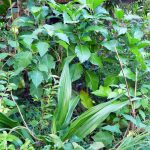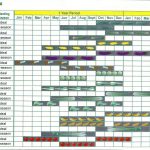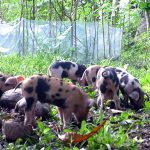More drawn to livestock, I have not done much gardening in years. A few attempts have not resulted to anything promising. However, since a section of the garden along the west side of the property has given way to newly rebuilt pigpens and the surrounding area cleared and trampled down by construction work, I may now have to face the challenge of tending not only to the pigs but also to plants.
But the first real challenge is tending to the soil – how to bring life back to soil that has been subjected to abuse.
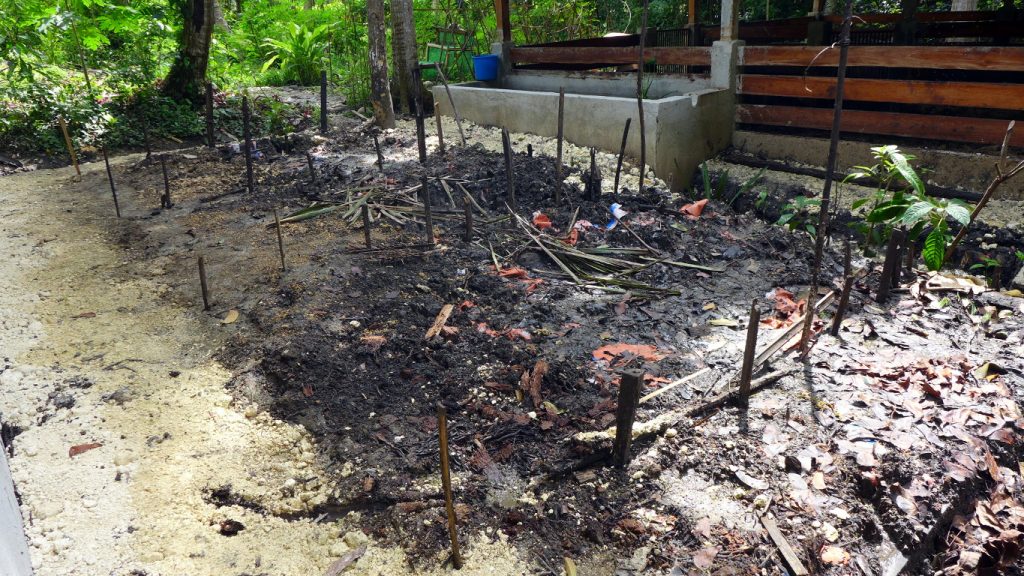
Here is one area of the west garden between the two pigpens. I have laid down stakes cut from the tough midribs of coconut leaves to fence in what would be garden beds and paths in between for access. The fencing will consist of the thicker and heavier parts of the midribs, and inside the fenced area the coconut fronds will be piled along with other organic materials for composting. This is also where spraying the area with lactic acid bacteria might be helpful.

This is the lower half of the same area, some 25 square meters of what used to be a boar pen. There is still some scrap wood left from the demolition of the old pen. The red bits are from the tattered canvas roofing of the pen.
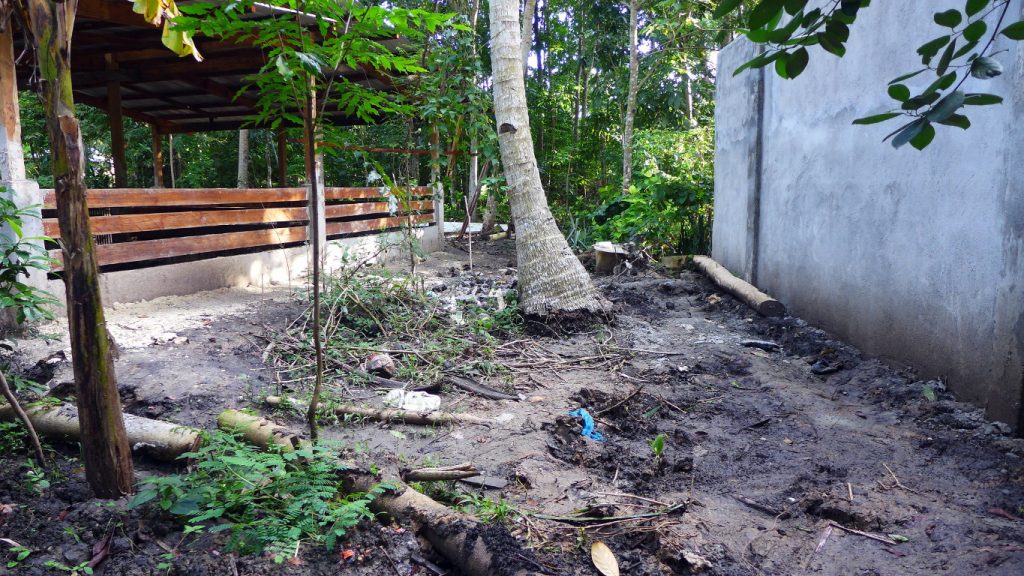
In this photo, one can see that the edge of the west garden has become devoid of ground cover vegetation due to construction work. A lot of work needs to be done here to revive the texture of the soil so that plants can start growing again. Due to digging and trampling, the soil has become compacted and is very prone to flooding.
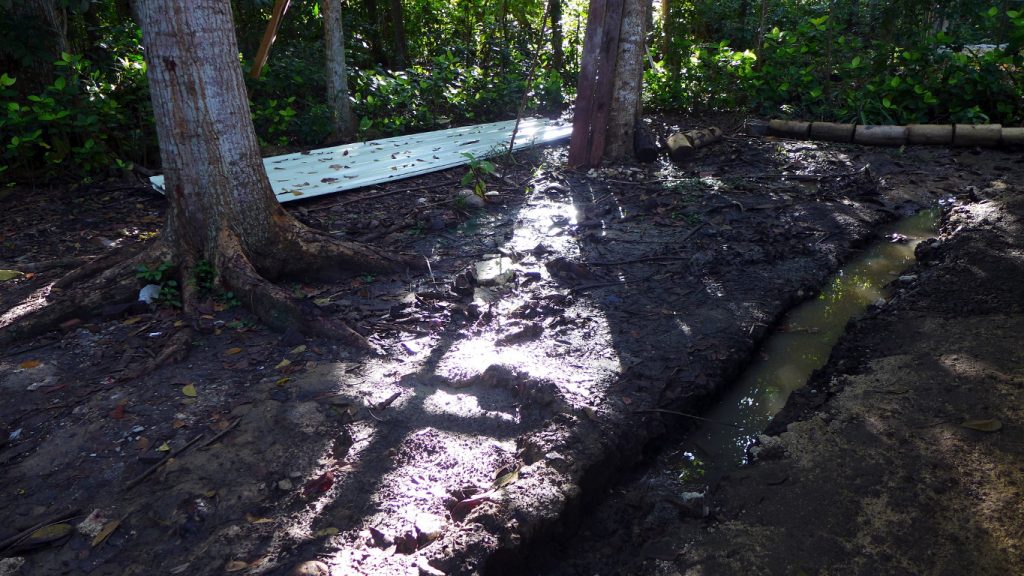
Here is the southern corner of the west garden. Likewise, compacted soil, a canal dug up leading to nowhere now becomes flooded. Logs from a tree that was cut down will need to be stood up to serve as plant holders in locations where they will not block the flow of rainwater. Those galvanised iron roof sheets will need to be removed and stored elsewhere.

We have cleaned up as much as we could but much remnants from the construction work remain: pieces from cements bags and broken hollow blocks and a pair of slippers, pieces of plastic bags, paper.

A section of the garden was used for mixing cement, and although the workers have broken up the concrete to expose the soil, they did not clean up afterwards. We will need to remove as much as we can of this concrete and put them nearby where they can reinforce paths around the pigpens.
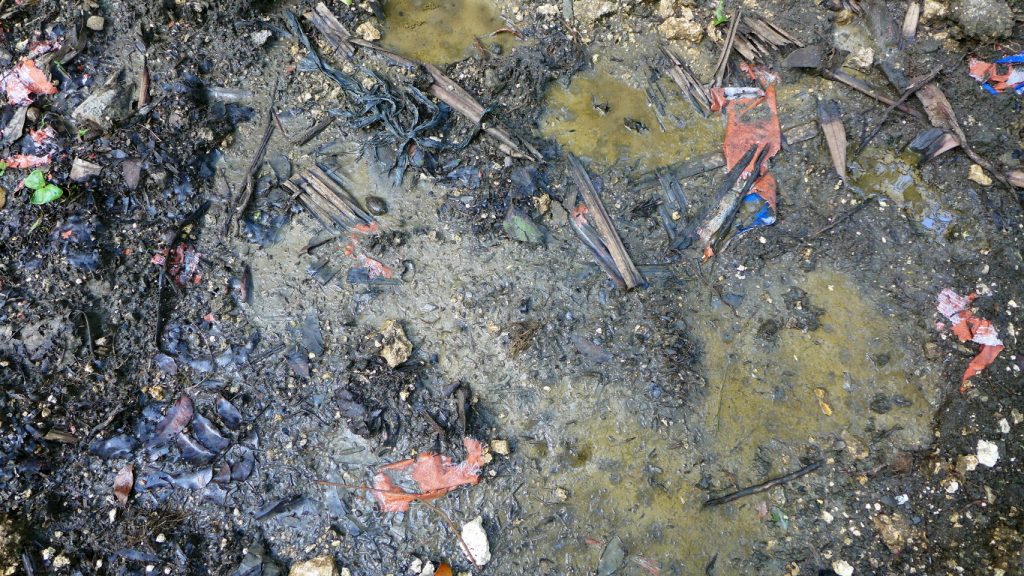
Here is a closer look at the soil in the area where the boar pen used to be. Heavy rains cause water logging and the ground here is very soft, it is really a mud pit. We will need to compost over these areas and will probably takes several months before improvement becomes visible.
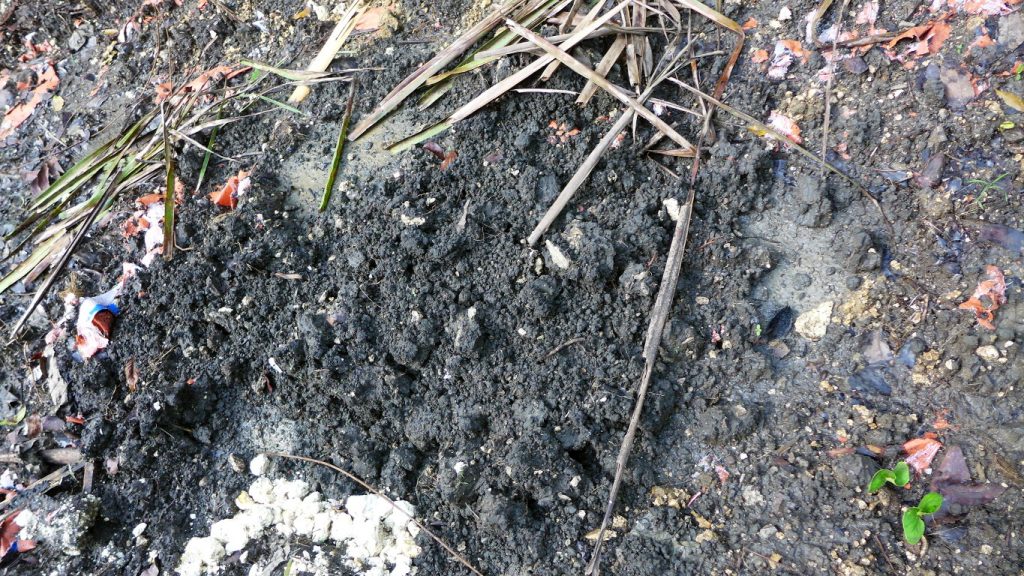
Here is another section of the boar pen which is a mix of soil, composted organic matter and limestone.
And when it rains …
These photos (below) show what the area looks like after a half hour of rain. It isn’t pretty.
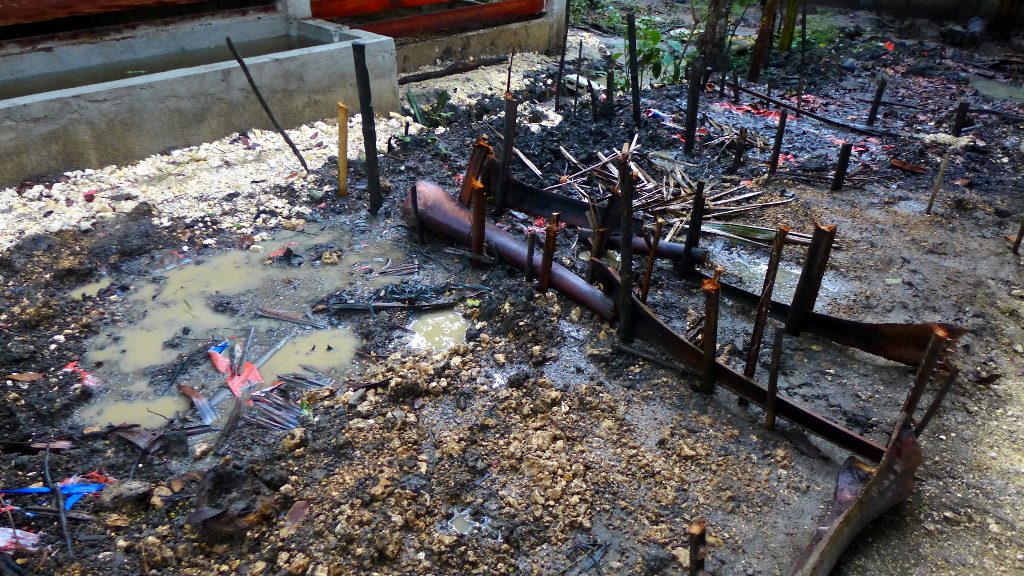
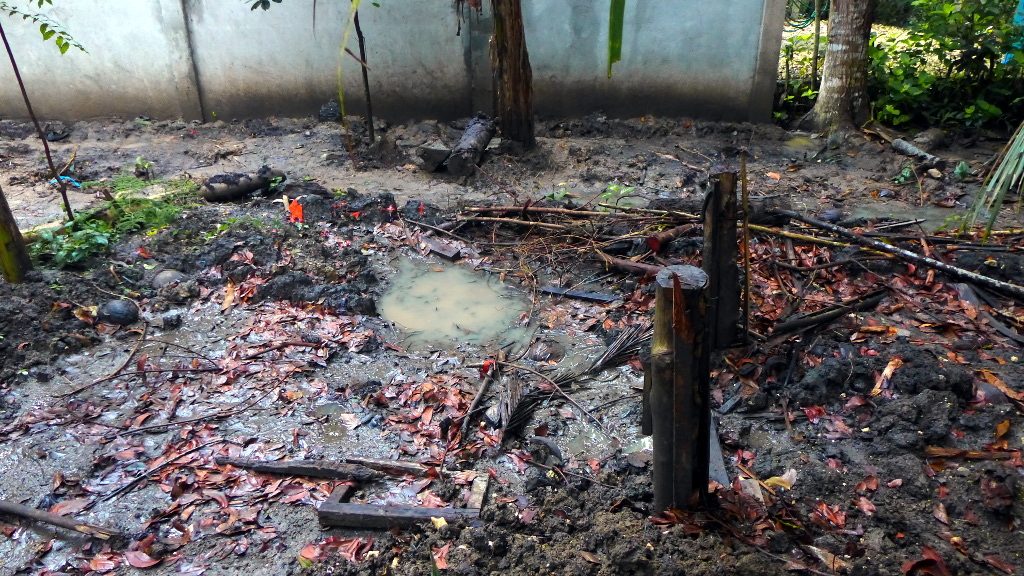
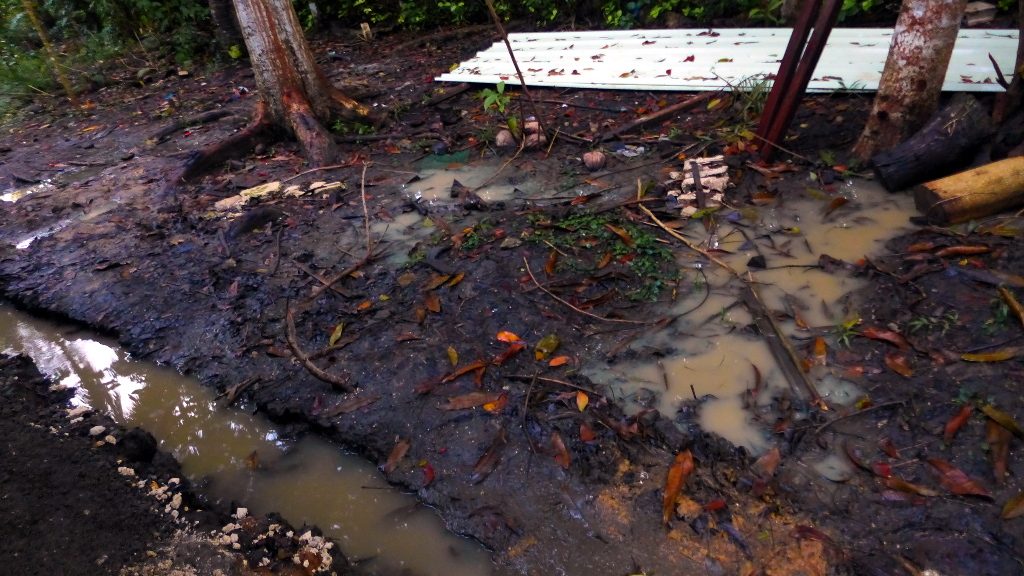
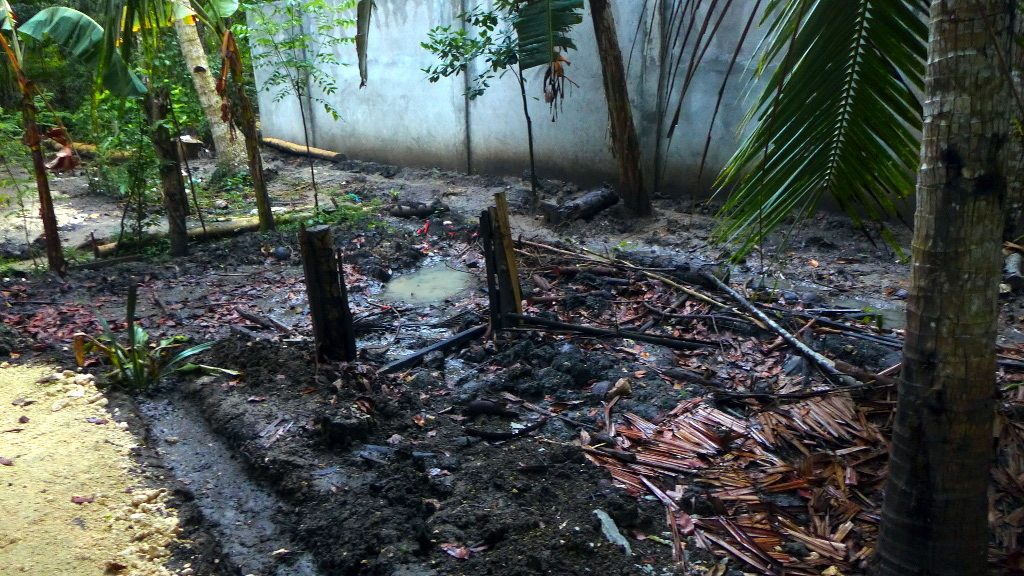
Managing the rainwater run-off from the upper part of the property will need to be done along with planting, contouring, rain gardening and such things in the west garden. A not-so-good neighbor has also been dumping their roof rainwater run-off into our property, so that will need to be dealt with later.
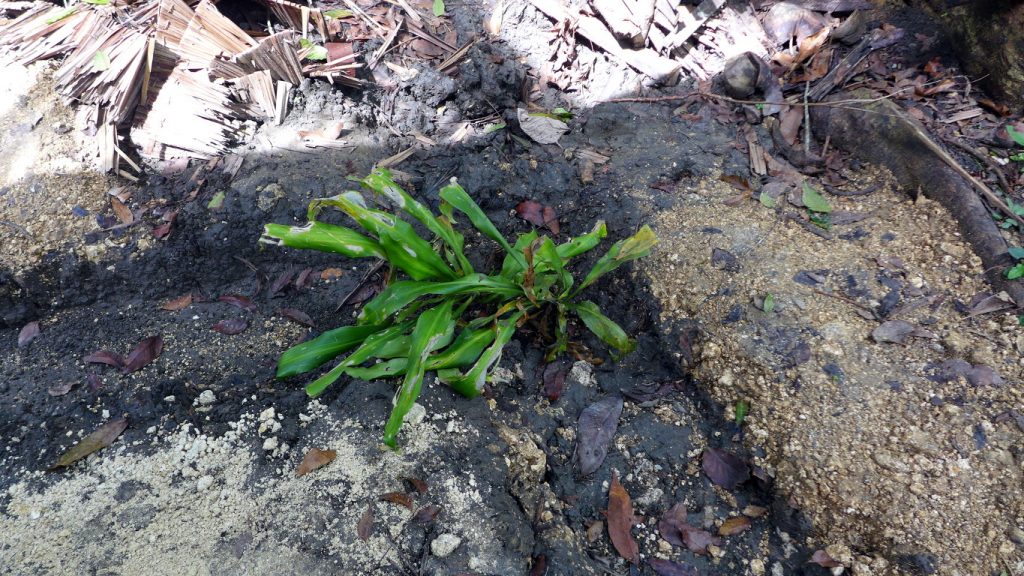
Canals were dug up around the pigpens to prevent rainwater from entering the pens. In some areas the water goes down, but in the southern section, the water pools in the canal and doesn’t get drained into the soil.
I planted tiger tail and fortune plants in this corner at the lower part of the canal hoping that later, more plants can grow in the canals and absorb the water.
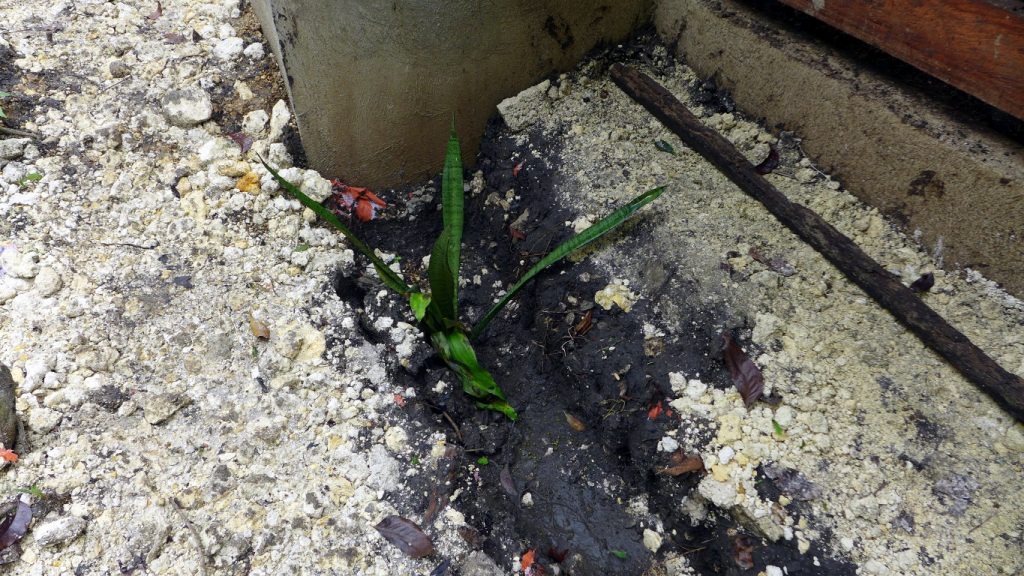
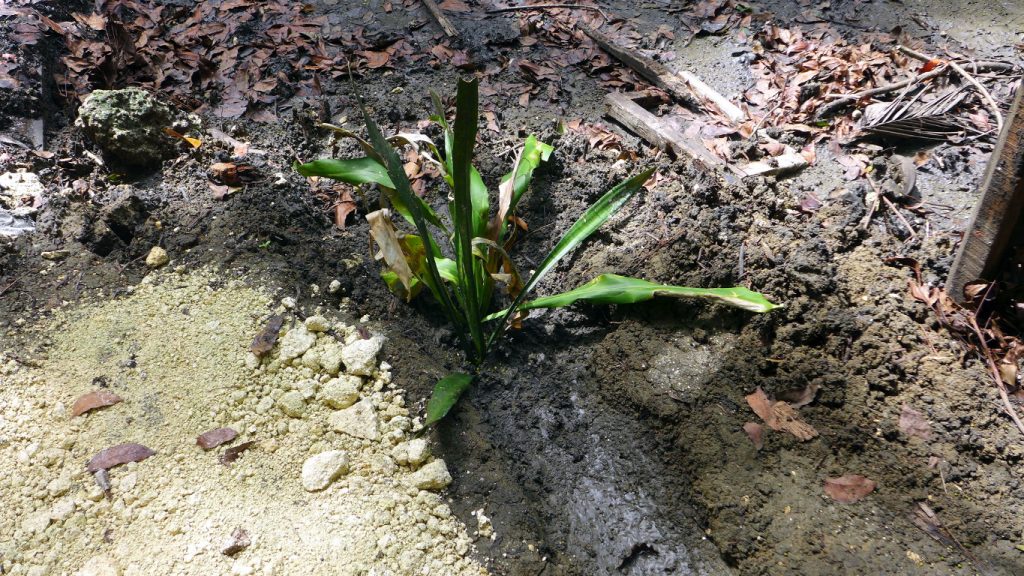
In a few areas where the canals flow downwards, I hope to dig a couple of rain gardens to serve as catchment for overflowing rainwater, hoping to avert flooding in the west garden. Soil dug up from the rain garden may be placed over the old pigpen particularly in excessively muddy places where water pools.

Next to a mahogany tree and behind the darkness of a pile of scrap wood from the demolished pigpens this lily has managed to survive and grow.

The mung beans I threw into the wet areas of the west garden have also started sprouting. I don’t expect these to grow and mature but I am aiming for these roots to enrich the soil. More leguminous plants will need to be planted in these areas.
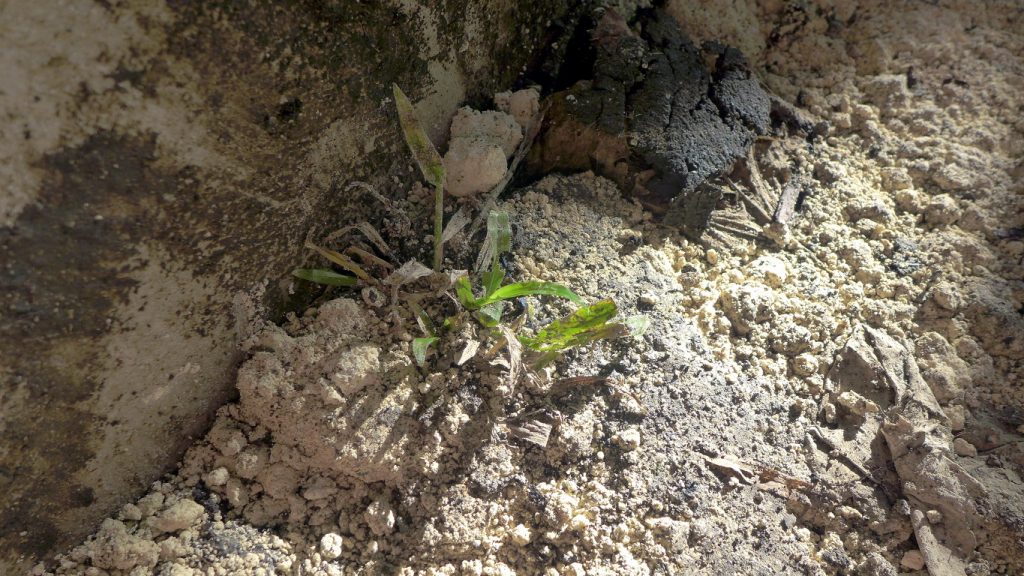
And this grass, pressed between the concrete base of the pigpen and the limestone paving has managed to survive.
So all is not lost, it may still be possible to bring the west garden back to life. It will take a long time, so it will be an exercise in patience. 😉
